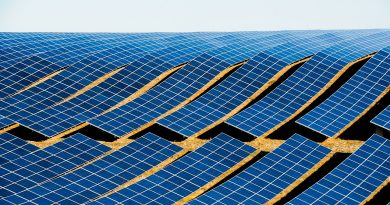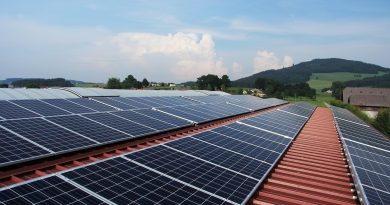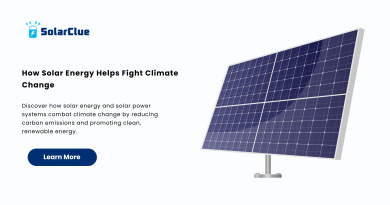How To Finance Solar Panels?
Solar energy is an increasingly attractive option for individuals and businesses looking to reduce their carbon footprint and save on energy costs. However, the upfront cost of installing solar panels can be a significant barrier. This guide will explore various financing options available in India, including loans, subsidies, and government schemes, and provide insights into calculating payback periods and return on investment.
Table of Contents
- 0.1 Government Subsidies and Incentives for Solar Panels
- 0.2 Solar Loans and Financing Options
- 0.3 Calculating the Cost of a Solar Panel System
- 0.4 Estimating Potential Energy Savings
- 0.5 Analyzing Payback Periods and Return on Investment
- 0.6 Comparing Financing Options (Loans, Subsidies, Self-Funding)
- 0.7 The Impact of Interest Rates on Financing Costs
- 0.8 Government Policies and Regulations Related to Solar Financing
- 0.9 Case Studies of Successful Solar Panel Financing
- 0.10 Tips for Choosing the Best Financing Option
- 1 Frequently Asked Questions (FAQs)
Government Subsidies and Incentives for Solar Panels
The Indian government offers various subsidies and incentives to promote solar energy adoption:
| Subsidy/Incentive | Details |
|---|---|
| Central Financial Assistance (CFA) | Up to 40% subsidy for residential rooftop solar systems up to 3 kW, and 20% for systems between 3 kW and 10 kW. |
| State-Level Subsidies | Additional incentives provided by state governments, varying across states. |
| Net Metering | Allows consumers to sell excess electricity generated back to the grid, reducing overall energy costs. |
| Tax Benefits | Deductions under Section 80-IA of the Income Tax Act for profits derived from solar power generation. |
These incentives can significantly reduce the cost of solar panel installation, making it more accessible to a wider audience.
Solar Loans and Financing Options
Financing the cost of solar panels can be managed through various loan options:
| Financing Option | Description |
|---|---|
| Solar Loans | Offered by banks and financial institutions specifically for solar installations, often with favorable interest rates. |
| EMI Financing | Some solar companies offer equated monthly installment (EMI) plans to spread the cost over time. |
| Green Loans | Specialized loans aimed at promoting renewable energy projects, including solar power. |
| Power Purchase Agreements (PPA) | An agreement to pay for the electricity generated by the solar system, often at a rate lower than the local utility. |
| Leasing | Allows consumers to lease a solar system with little to no upfront cost, paying a fixed monthly fee instead. |
Calculating the Cost of a Solar Panel System
Understanding the total cost of a solar panel system is crucial for effective financial planning:
- System Size: The size of the system (in kW) directly affects the cost. Larger systems cost more but generate more electricity.
- Equipment: Costs include solar panels, inverters, mounting systems, and wiring.
- Installation: Professional installation fees, including labor and any necessary permits.
- Maintenance: Regular maintenance costs, though minimal, should be factored into the total cost.
Example Calculation: For a 5 kW system:
- System Cost: ₹50,000 per kW = ₹2,50,000
- Subsidy (CFA): 20% subsidy = ₹50,000
- Net Cost: ₹2,00,000
Estimating Potential Energy Savings
The potential savings from a solar panel system depend on several factors:
- Electricity Rates: Higher local electricity rates increase savings.
- Solar Energy Production: The amount of energy your system produces, influenced by factors like location, sunlight hours, and system efficiency.
- Net Metering: Selling excess electricity back to the grid can offset costs.
Example: If your system produces 7,000 kWh per year and your electricity rate is ₹5 per kWh:
- Annual Savings: 7,000 kWh x ₹5/kWh = ₹35,000
Analyzing Payback Periods and Return on Investment
The payback period is the time it takes for the savings from your solar system to cover the initial investment. ROI measures the profitability of the investment over time.
| Factor | Impact on Payback Period/ROI |
|---|---|
| System Cost | Lower system costs reduce payback time. |
| Subsidies | Government subsidies shorten the payback period. |
| Energy Production | Higher energy production increases savings and ROI. |
| Electricity Rates | Higher rates improve ROI by increasing savings. |
Example Calculation:
- Initial Cost: ₹2,00,000
- Annual Savings: ₹35,000
- Payback Period: ₹2,00,000 / ₹35,000 ≈ 5.7 years
Comparing Financing Options (Loans, Subsidies, Self-Funding)
Different financing options come with varying costs and benefits:
| Option | Pros | Cons |
|---|---|---|
| Loans | Immediate installation, spread out payments. | Interest rates can increase overall cost. |
| Subsidies | Reduces upfront cost, government-backed. | Eligibility criteria may limit access. |
| Self-Funding | No debt, full control over the system. | High initial cost, may strain savings. |
The Impact of Interest Rates on Financing Costs
Interest rates can significantly affect the total cost of financing a solar panel system:
- Fixed vs. Variable Rates: Fixed rates provide predictability, while variable rates can change over time, potentially increasing costs.
- Loan Tenure: Longer tenures reduce monthly payments but increase total interest paid.
- Comparison of Lenders: Different lenders offer varying interest rates; comparing offers can help secure the best deal.
Government Policies and Regulations Related to Solar Financing
The Indian government has implemented several policies and regulations to support solar financing:
- Rooftop Solar Programme Phase II: Provides financial assistance for residential solar installations.
- SECI Financing: Offers financing options for large-scale solar projects.
- Priority Sector Lending: Banks are encouraged to provide loans for renewable energy projects, including solar, under favorable terms.
- Regulatory Approvals: Ensuring compliance with local regulations is crucial for accessing subsidies and financing.
Case Studies of Successful Solar Panel Financing
Understanding real-world examples of successful solar panel financing can provide valuable insights:
- Case Study 1: A residential homeowner in Maharashtra used a combination of government subsidies and a solar loan to finance a 3 kW rooftop system, achieving a payback period of 4.5 years.
- Case Study 2: A small business in Karnataka financed a 10 kW solar installation through a Power Purchase Agreement (PPA), reducing electricity costs by 30% without upfront investment.
Tips for Choosing the Best Financing Option
To select the best financing option, consider the following tips:
- Assess Your Financial Situation: Determine how much you can afford upfront and whether a loan or PPA is more suitable.
- Research Subsidies: Take full advantage of available subsidies and incentives to reduce costs.
- Compare Loan Offers: Shop around for the best interest rates and terms from various lenders.
- Consider Long-Term Savings: Focus on the overall savings and payback period rather than just the initial cost.
- Seek Professional Advice: Consult with a financial advisor or solar expert to explore the best financing strategy for your needs.
Frequently Asked Questions (FAQs)
Q1: What are the main financing options available for solar panel installation in India?
A1: Financing options include solar loans, EMI financing, government subsidies, Power Purchase Agreements (PPA), and leasing.
Q2: How do government subsidies reduce the cost of solar panels?
A2: Government subsidies, such as the Central Financial Assistance (CFA), reduce the upfront cost by providing a percentage of the system cost as a grant.
Q3: What factors affect the payback period of a solar panel system?
A3: Factors include the initial cost, energy production, electricity rates, and availability of subsidies.
Q4: How can I calculate the return on investment (ROI) for my solar panel system?
A4: ROI can be calculated by comparing the total savings over the system’s lifetime to the initial investment, expressed as a percentage.
Q5: Are there specific loans available for solar panel installations?
A5: Yes, many banks and financial institutions offer solar loans with favorable terms designed specifically for solar installations.
Q6: How does net metering benefit solar panel owners?
A6: Net metering allows you to sell excess electricity back to the grid, reducing your electricity bill and improving the payback period.
Q7: What should I consider when choosing a solar loan?
A7: Consider the interest rate, loan tenure, monthly payments, and total interest cost when selecting a solar loan.
Q8: Can businesses also benefit from solar financing options?
A8: Yes, businesses can access various financing options, including PPAs, loans, and subsidies, tailored to commercial solar projects.
Financing a solar panel installation in India requires careful consideration of the available options and potential savings. By understanding the various subsidies, loans, and incentives, and calculating the payback period and ROI, you can make an informed decision that maximizes your investment in solar energy.



